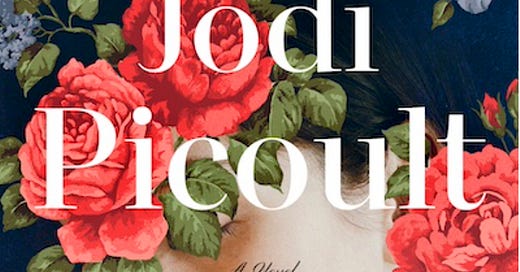Jodi Picoult's new book about the “Q”
Part 2 from the award-winning novelist on how she found the authorship question.
Jodi Picoult, the #1 New York Times bestselling author of twenty-nine novels, has recently published a novel on the Authorship Question titled By Any Other Name. The work is presented as intertwining narratives, one set in 1581 about Emilia Bassano who pays a man to use his name, thereby writing her own out of history, and the other in the present—a female descendant of Bassano’s who is also a playwright finding it difficult to get credit for her own work.
Part 1 of this piece by best-selling author Jodi Picoult was published on our SAT Substack on 23 November. We left off at:
As a woman, it would have been both scandalous and potentially treasonous to have her own name on a piece of work performed in public—which would give her the motive to use an allonym. So why do I think that allonym was William Shakespeare?
There is plenty to suggest her candidacy as one of the true authors. She came from a family accustomed to public performance. She was classically and legally educated. She had access to the theatre and she was a writer. She knew details of places, like Italy, not available in guide books (like the location of the closets in the Queen of Denmark’s bedchamber in Hamlet, or on which shore a grove of sycamore grew, as cited by Benvolio in Romeo and Juliet.) She outlived Shakespeare. But there are also textual references that have her fingerprint on it. Take Hamlet’s poor Ophelia. Female Shakespearean scholars now suggest Ophelia’s madness and suicide was brought on by being pregnant and unmarried—and she turns to Hamlet, the Queen, Polonius, and Laertes to no avail. Then comes the scene where she gives away herbs but keeps rue for herself—at the time, rue was used to abort a fetus. That’s not something Shakespeare might have cared about, but Emilia—booted out of her living situation for being unmarried and pregnant—certainly would. In The Merchant of Venice, you have a very nuanced portrait of a Jew who has been judged harshly by society—something Emilia and her Jewish family would know viscerally. In Romeo and Juliet, the age of the female protagonist is mentioned three times (it’s the only play where the heroine’s age is given). Juliet is 13 and every discussion involves whether she is ready to have a sexual relationship as a wife. Emilia was thirteen when she became the courtesan of a 56-year-old man.




